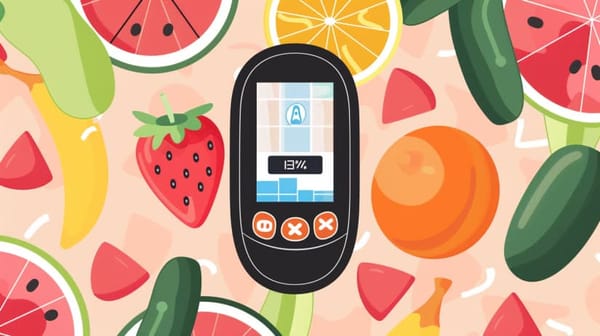As a 10-year veteran of water fasting for weight loss and health benefits, I eventually stumbled upon dry fasting. No food or water. The dry fasting results really rocked my world. There’s a common saying that 1 day of dry fasting is equal to 3 days of water fasting. This is backed up by research showing that the acidotic crisis is reached on average on day 3 for dry fasts and day 7 for water fasts. As someone that leads a very busy life, being able to swap out a 7-day commitment for a 3-day one, makes me very happy. In this article, I’ll do my best to give you a concise and detailed version of my experiences while dry fasting for 72 hours.
What is Dry Fasting?
Dry fasting, where individuals abstain from both food and water, is an ancient practice with claimed benefits like weight loss, improved immune function, better skin, and reduced inflammation. However, scientific evidence supporting these claims is limited, and the risks may outweigh the benefits. Dry fasting risks include dehydration, mental fog, kidney stones, and urinary tract infections. This practice differs from intermittent fasting, which involves eating and fasting cycles, and water fasting, where only food intake is restricted. Dry fasting has been practiced for centuries for religious and spiritual reasons, but one should exercise caution and seek medical advice before attempting it. Although dry fasting can help improve mood, focus, and mental clarity, it is essential to ease into it and maintain a healthy diet and regular physical activity for overall well-being.
Preparing for the Dry fast weight loss
Preparing for dry fasting is one of the most important things you can do. You are embarking on one of the hardest fasting experiences of your life. It goes without saying that dehydration is something that needs to be taken seriously. No food AND water is harder on the body than simply no food. That’s why hydrating before you start the dry fast is critical. You’ll want to make sure that you top up on your electrolytes. Most people do this by consuming Sodium (NaCl), Baking Soda (NaHCO3) Potassium (K), and Magnesium (Mg) in a 1:2:2:1 ratio. A very common home-made electrolyte drink is called Snake Juice and the recipe includes:
- 2L of water
- 1 teaspoon Potassium Chloride
- 1 teaspoon Sodium Bicarbonate
- 1/2 teaspoon Sodium Chloride
- 1/2 teaspoon Magnesium Sulphate
Remember not to drink this electrolyte drink too quickly or you may have to run to the washroom! You should drink this throughout the day before starting the fast.
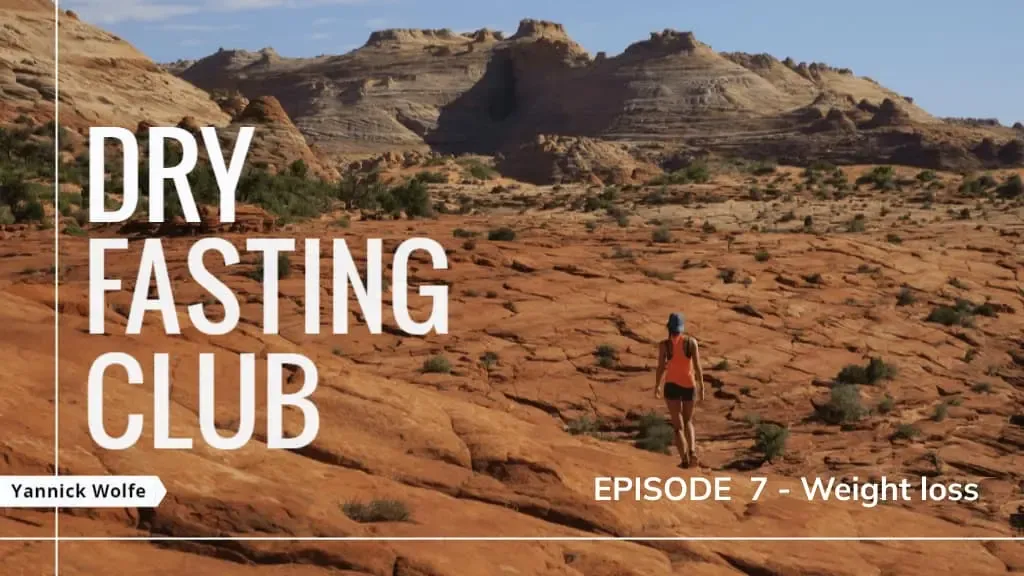
Choosing between a soft dry fast and a hard dry fast
It’s important to be aware that there are big differences between a soft and hard dry fast. A soft fast allows contact with water, just no swallowing. A hard dry fast does not allow any contact with water, not even to wash your hands. A lot of people will argue that there is barely any difference between the two. You’ll find that the people who usually say this are people who have not done a prolonged hard dry fast. The people who have tried both, know that there is both a physical and a mental difference between the two. Although it may be very hard to abstain from all contact with water, it allows you to feel a stronger connection to the dry fast (mental), as well as provides more powerful results in terms of weight loss and healing.
Starting weight results
After preparing for the fast, it was time to begin. These are the initial weigh-in photos. Body weight starting at 189lbs, 0.5mmol ketone levels.
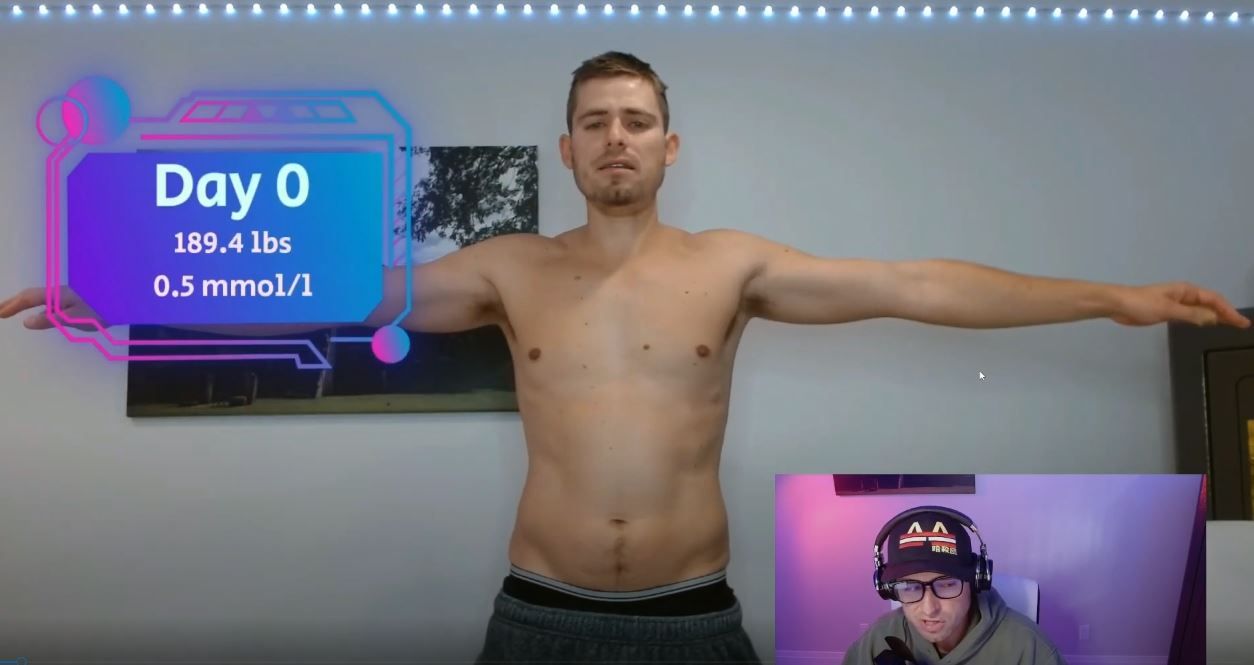
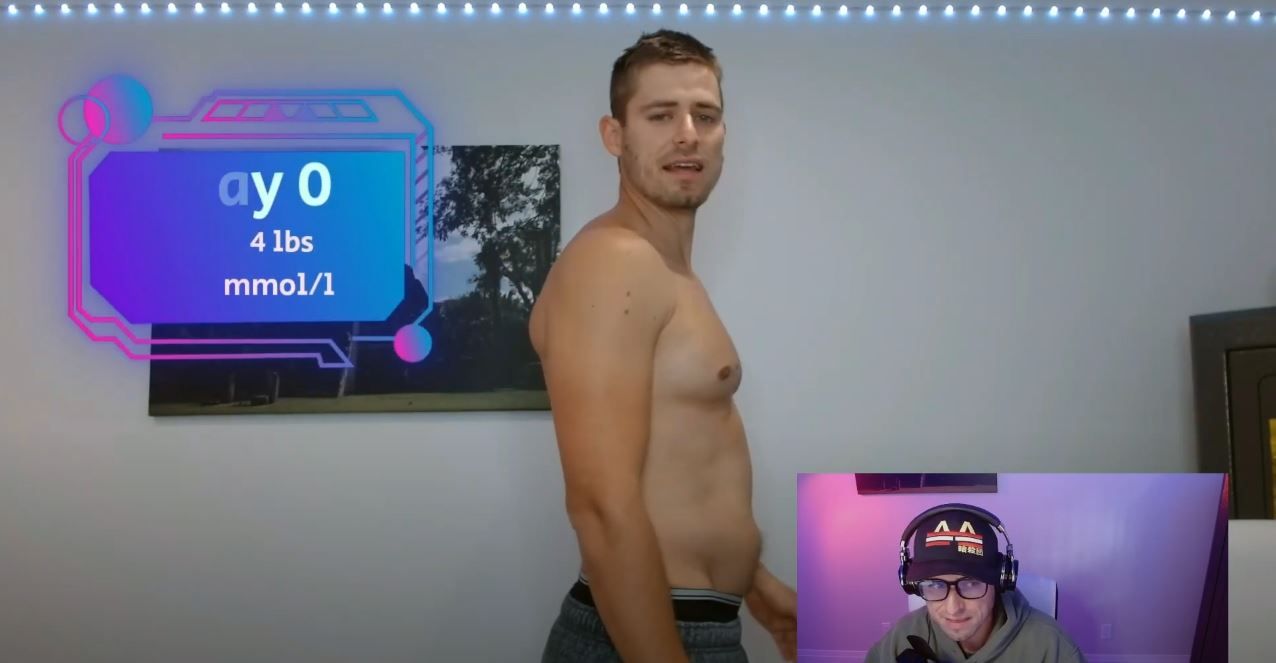
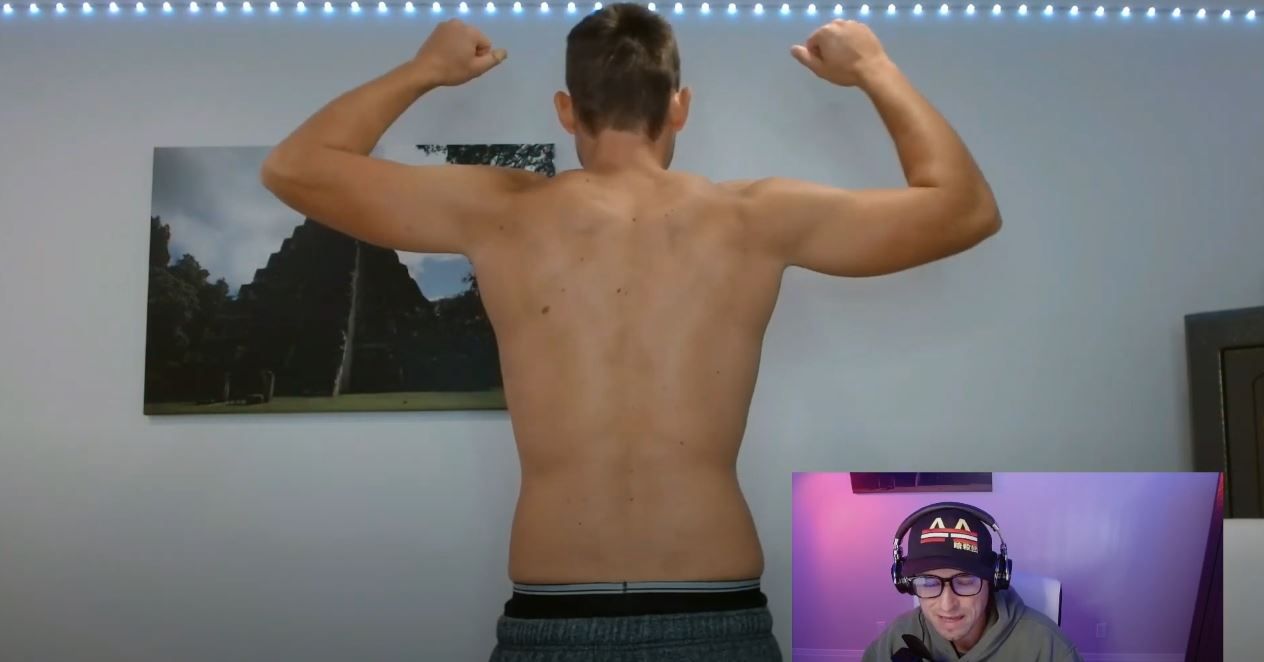
1-day (24 hours) dry fast weight loss results
This was a pretty easy day for me. As mentioned in the video the first day is usually very straightforward for anyone that already has fasting experience. If you regularly practice intermittent fasting or one meal a day (OMAD), then the first day just feels like something you’ve already done a hundred times. If, however, you are doing this as a beginner, you can expect a lot of difficulties. Feelings of hunger, headaches from blood pressure fluctuations, and more can occur. You are always advised to start on an easier fasting protocol before doing extended fasting on any kind, water or dry. It is during the first day that I felt the most irritable when I would see anyone eating.
On this weigh-in, I had already lost 5.4 pounds. It’s quite normal to lose a lot of water weight on the first day as your body is still running at normal levels and flushing out water quickly. It’s expected to slow down quite a lot on the second day. Notice how the ketone levels have spiked quite drastically, from 0.5mmol/l to 4.0mmol/l, indicating that fat burn was ramping up quickly.
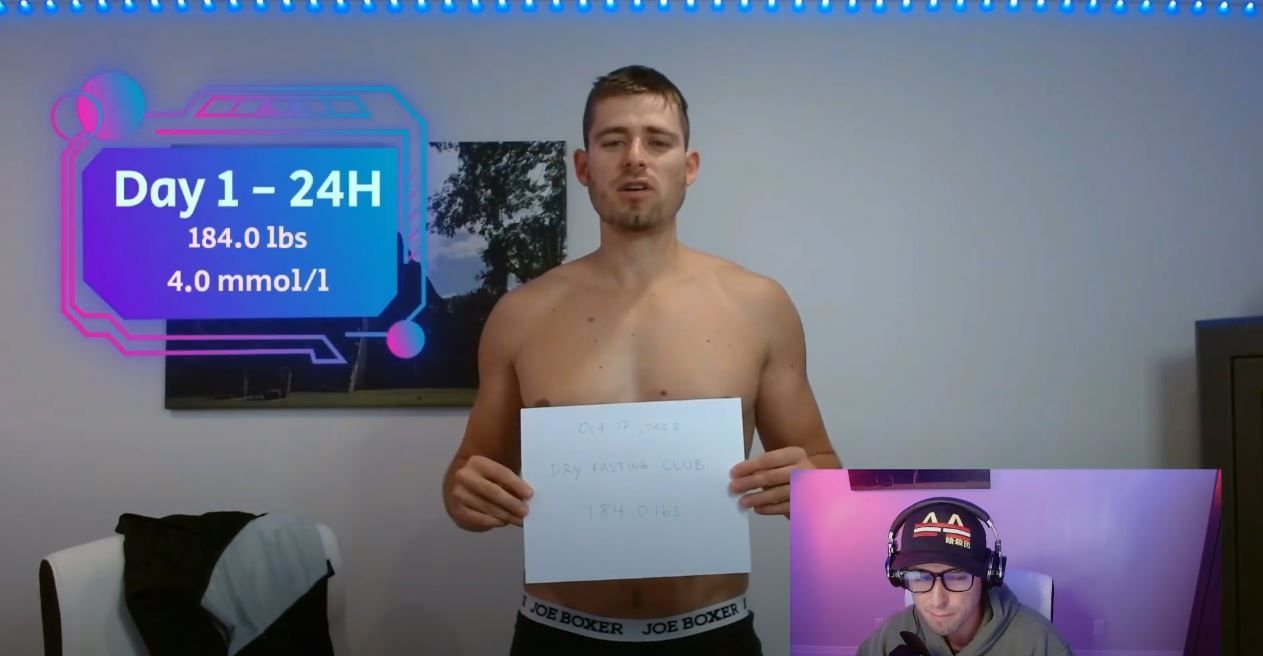
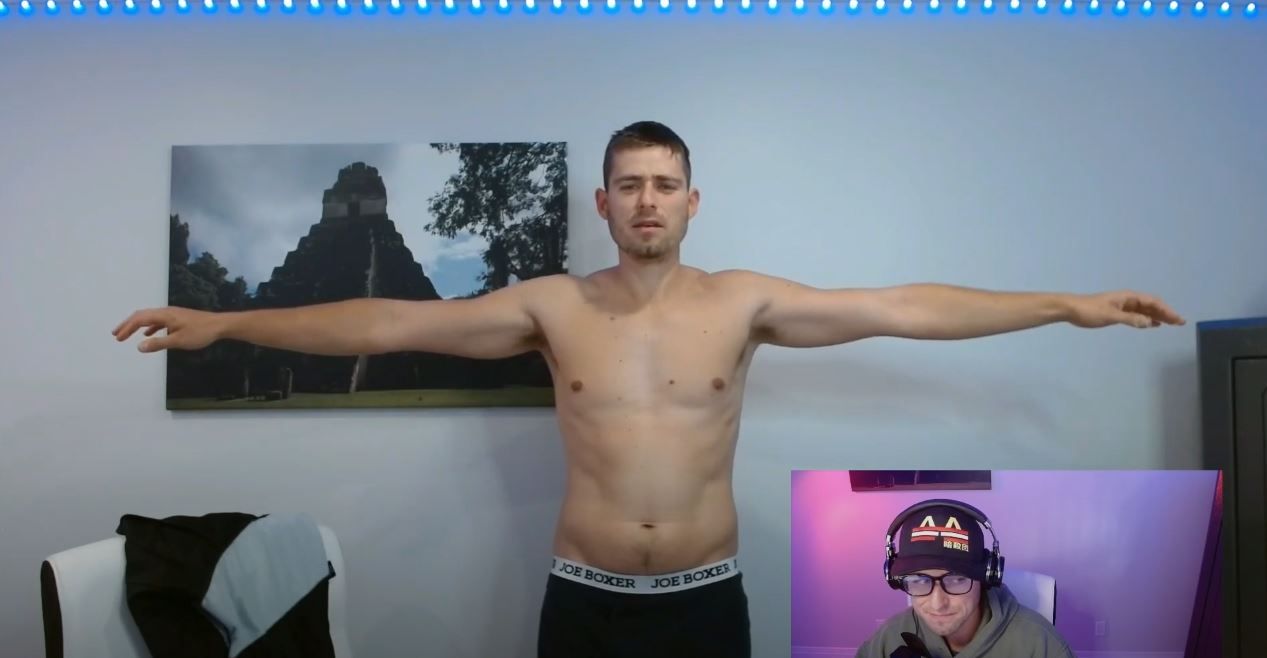

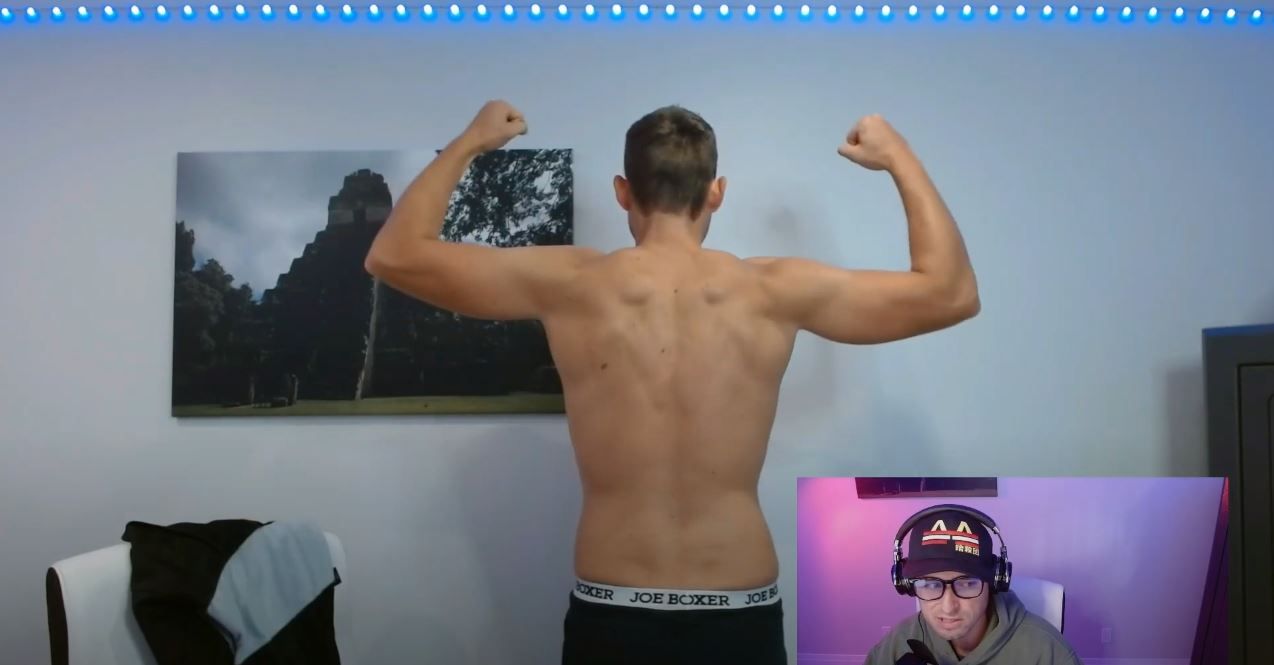
How much fat can you lose on a 24-hour dry fast?
It’s important to remember that your first day will be a lot of water weight that will be lost. Something similar occurs when you start water fasting as well. However, with water fasting the decline will be much more gradual, as you are still refilling your internal water reserves. If you continue to take electrolytes during the water fast, you will minimize water loss even more.
With a dry fast, your body starts to balance the electrolytes better, which is a blessing in disguise, since you do not really have a way of ingesting them anyways. The amount of fat loss on a 24-hour dry fast would be minimal, but still something. Considering my total urine weight was around four pounds, it seems I had lost around one to two pounds of a mix of glycogen (mostly) and fat just on the first day. I performed some work around the house and went on two long walks with my dog which sped up my glycogen depletion. Remember, the glycogen needs to be used up to go into deeper ketosis and autophagy.
2-day (48 hours) dry fast weight loss results
Day 2 of the dry fast was probably the hardest day for me. It is in this day that the body attempted to reach some sort of homeostasis while also switching from glucose burning to fat burning. I had headaches that are associated with a big drop in blood sugar levels and dehydration. Some people can experience headaches and nausea from additional reasons like caffeine withdrawal and the removal of toxins (detoxing) from fat cells. It is advised to lower your caffeine intake slowly as another method of preparation for periods of extended fasting. Even for someone with experience like me, it was tough. I tried to keep my mind off of it, took a nap in the middle of the day, and soldiered on.
When I reached the 48-hour mark, I was feeling fantastic. The urge to eat had almost disappeared completely. I guess my body had reached a sort of balance, started focusing on using ketones for fuel and slowed down water loss. There are a few studies that show that the body is able to adapt to water deprivation and still maintain healthy levels of blood plasma, kidney function, and electrolytes, up to 5 days of water deprivation. Click here to check out the 5-day water and food deprivation study.
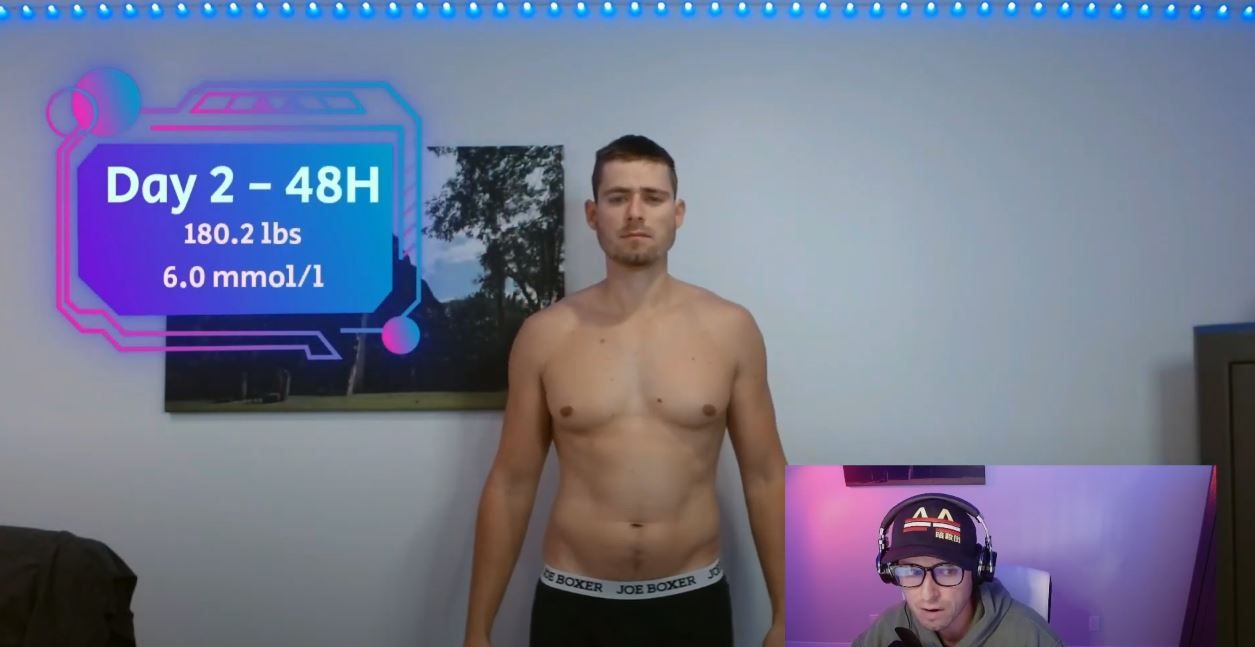

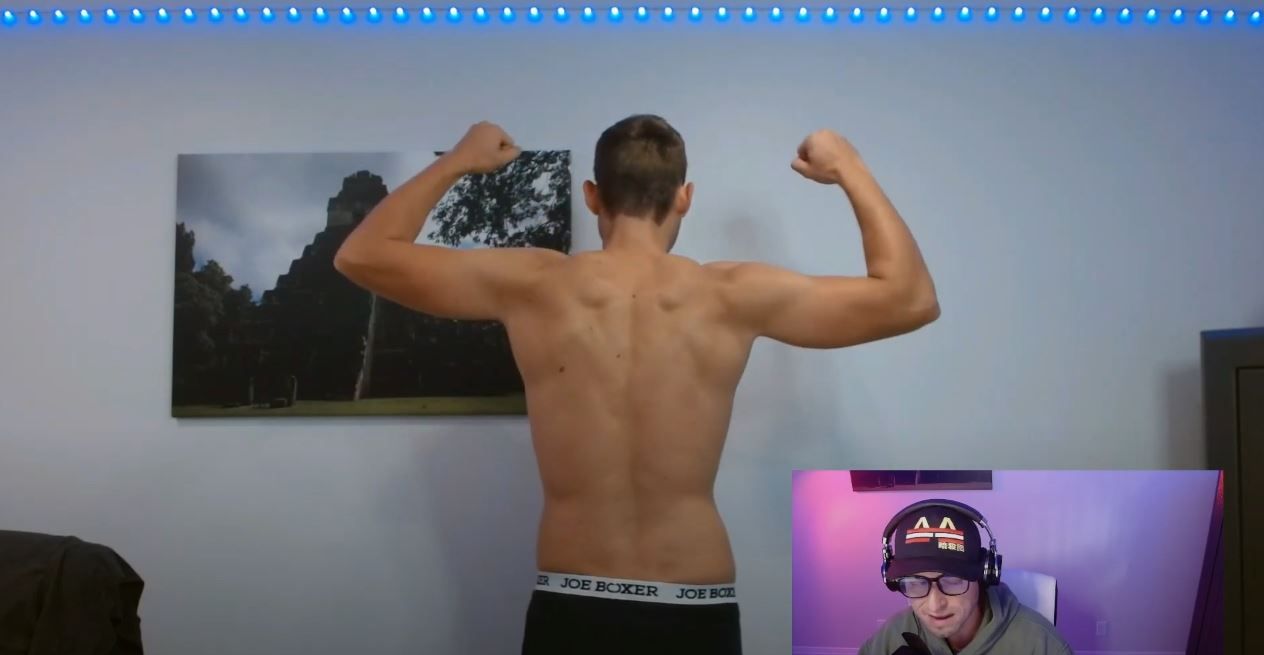
How much fat can you lose on a 48-hour dry fast?
The second day is usually the one that really turns on the fat burn. Since the first day is the one where you drop the biggest amount of water and glycogen, day two weight loss starts to become mostly fat. I measured my urine levels throughout the fasting period, and on day 2 I had approximately one pound of urine. Considering my weight fell by 3.8 pounds, it seems that total fat loss was anywhere between 2-3 lbs.
3-day (72 hours) dry fast weight loss results
On the third day of a dry fast, I expected to be weaker than on the second day. However, I had boundless energy and a clear mind. My mental state was sharp and focused, and I felt like I could do this forever. I was able to go through my work day easily while working on the computer. It is this day that thoughts of water started to creep into my mind. The hard dry fast was starting to make me fantasize about taking a shower or brushing my teeth. I wanted to drink water more than the craving to eat something. The thought of biting into a juicy fruit was high up there too.
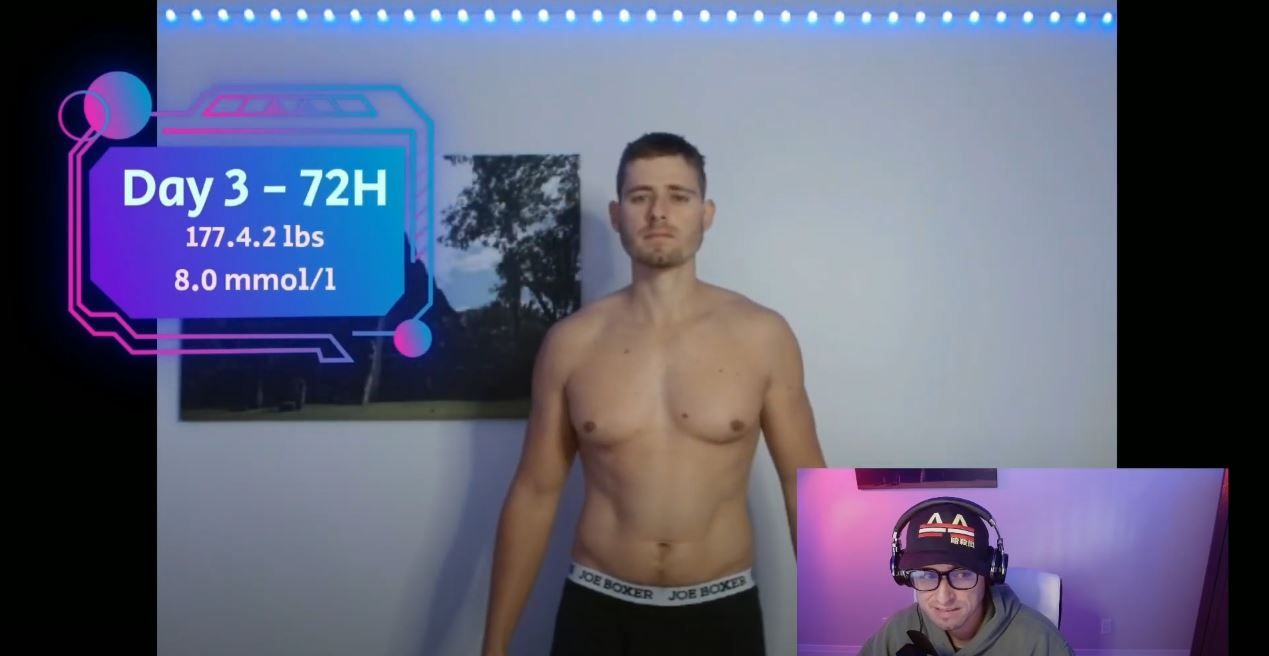


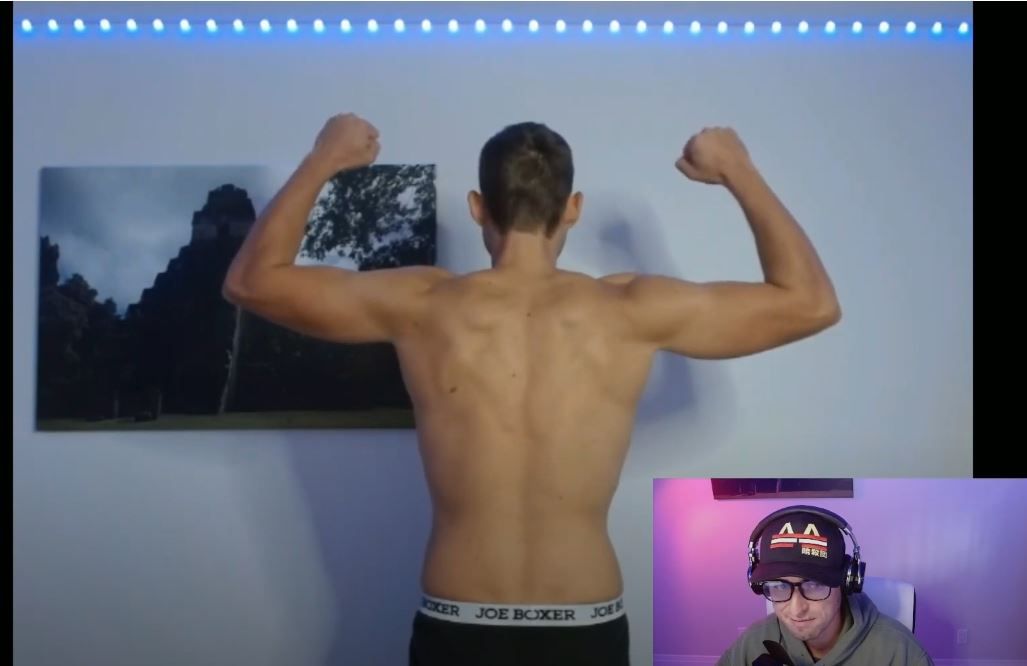
How much fat can you lose on a 72-hour dry fast?
At the 72-hour mark, my weight loss slowed down to 2.8 pounds for the day. Urine collected weighed around 0.6 pounds, indicating a loss of 2.2 pounds of mostly fat. What is very interesting is that the 2.2 pounds of fat lines up exactly with Dr. Filinov’s statements of losing 1kg of fat on average per day of dry fasting. You can really lose weight quickly. The urine collected was slightly more than on the second day. Without any water being consumed, it seems that internal water was being created from the fat cells that were being burned. Most experienced dry fasters call this metabolic water. It’s most likely the reason why some people can dry fast for over 11 days.
Urine collected while dry fasting results
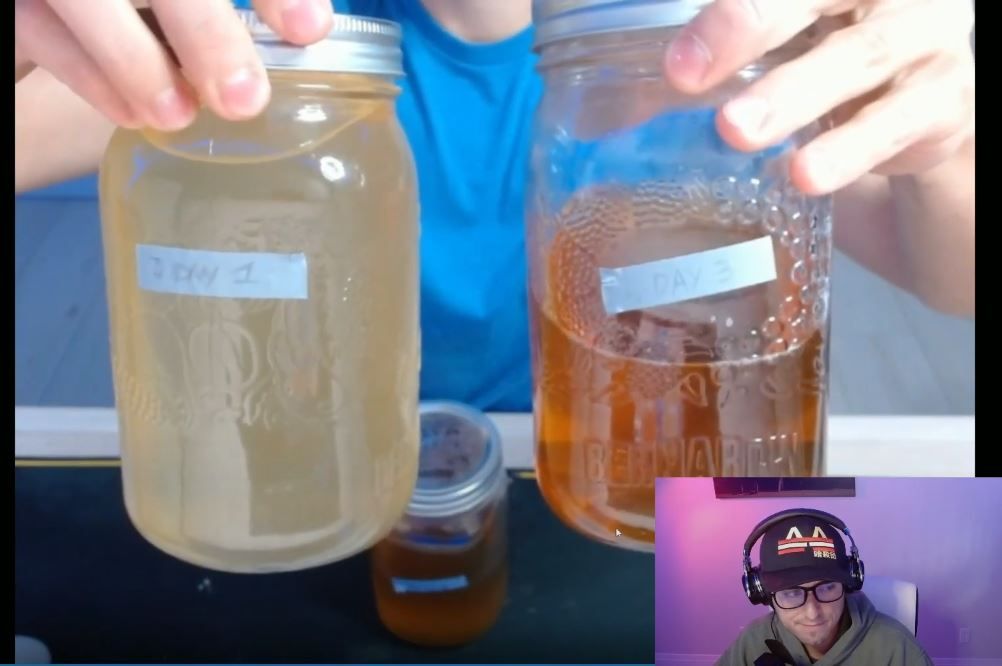
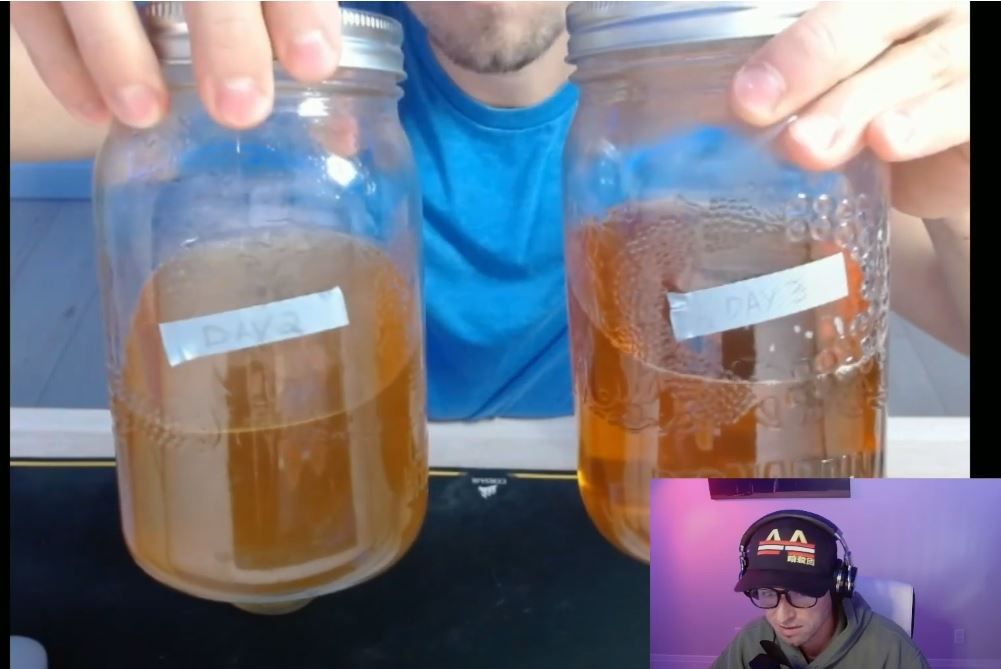
The jars were labeled day 1, day 2, and day 3. They were collected throughout each day. Day 1 had approximately one and a half full mason jars (1L jars).
There was a drastic change from day one to day two in urine amount as well as color and clarity. The urine got darker day by day, but also clearer. I’m not aware of any infections or diseases that I may have that could have caused it, so I have to chalk it up to dehydration and the body dumping water and other minerals quickly. I did take some vitamins and supplements that could have also caused this.

Refeeding results after the fast
Once the three-day fast was completed, it was time to focus on refeeding. These results were taken on the fourth day of the refeed. I had gained almost 7 pounds of water weight in the first two days by just drinking water and bone broth, but continued to lose fat. On day four, I had started eating eggs and working out.
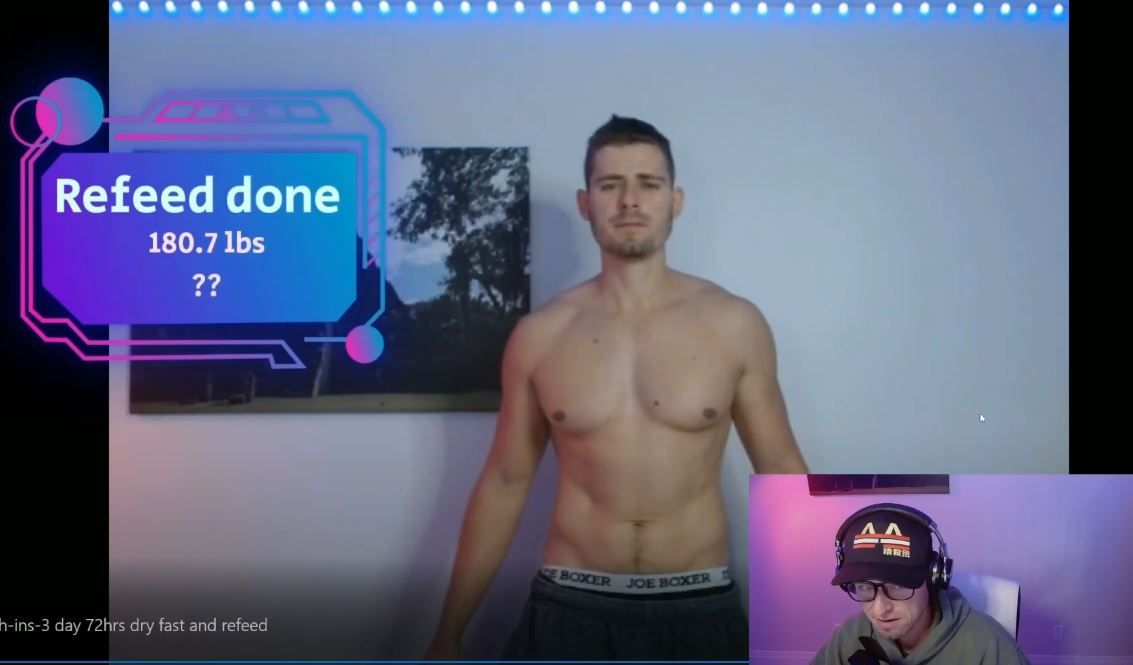
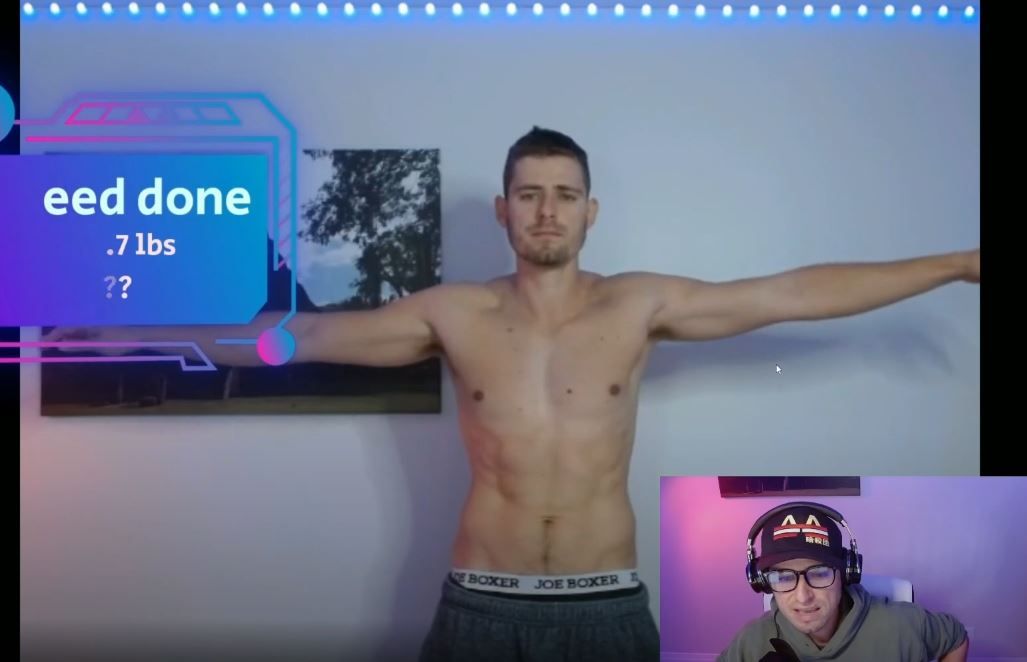

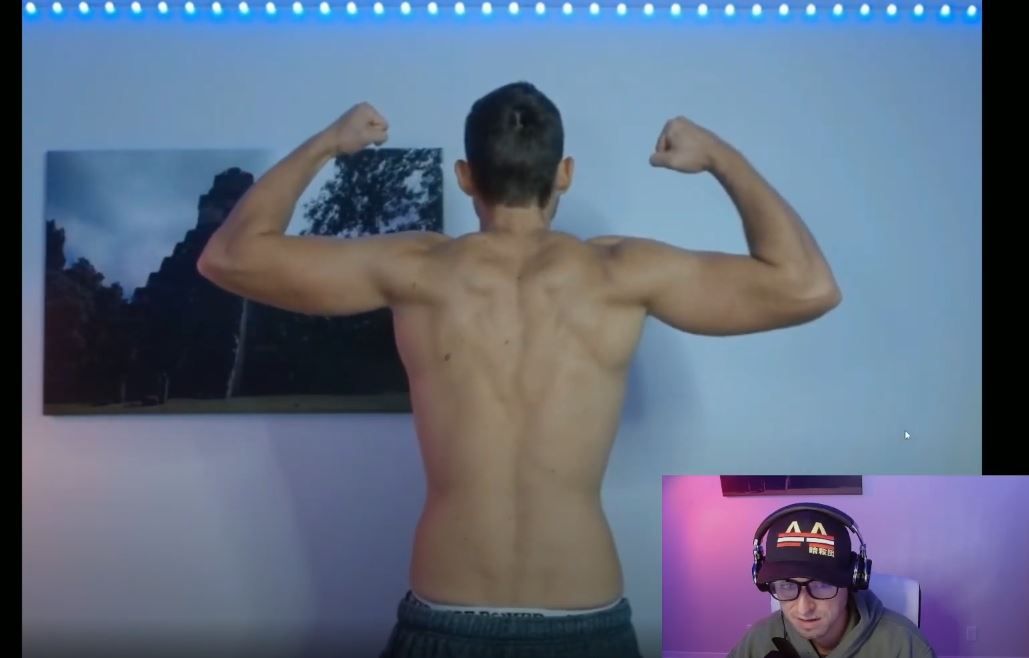
How to refeed after a 3-day hard dry fast
With water fasting, you are advised to refeed the same amount of days that you fasted at a one-to-one ratio. With a dry fast, however, you are advised to refeed double the amount of days that you fasted at a two-to-one ratio. So with a 3-day hard dry fast, you should refeed for 6 days. What does this mean? It’s different for everyone, but the safest way is to start with water and after a few hours move to bone broth.
Some fasters recommend fruit juice that is very diluted with water. Then the next day after that you move on to steamed vegetables and kefir. You slowly add on easily digestible food options and scale towards eggs and meat on your last days. The more gradually you refeed, the more time your body has to rev back up and continue healing throughout the process.

My observations during and after the 72 hours hard dry fasting period
The body is a marvelous thing that can run without water. I felt like I had broken through a barrier set by society. How many times have I heard that you can’t survive for longer than 3 days without water. I do believe that if one were to exercise continuously during the dry fast, they may cause permanent damage. But doing it mindfully and limiting physical exercise not only let me stop drinking water for 72 hours, but I felt like I could easily continue. My longest dry fast so far has been 120 hours at which point the dry mouth became unbearable and I decided to break the fast.
Not brushing your teeth for multiple days feels gross. But boy is it ever worth it! Once you take that first sip of water you’re ready to cry tears of joy. Suddenly water has flavor and you become a temporary water snob. The accomplishment that you feel after completing a dry fast is on another level. You feel your brain rewiring. I felt like my brain was clean and firing on all cylinders. I also felt like my mental health improved. Much fewer negative thoughts and they were replaced with happy thoughts that revolved around the simple things in life. The joy of just sitting there content that you’re alive and that you’ll be able to taste food again.
200 Hours of Dry Fasting
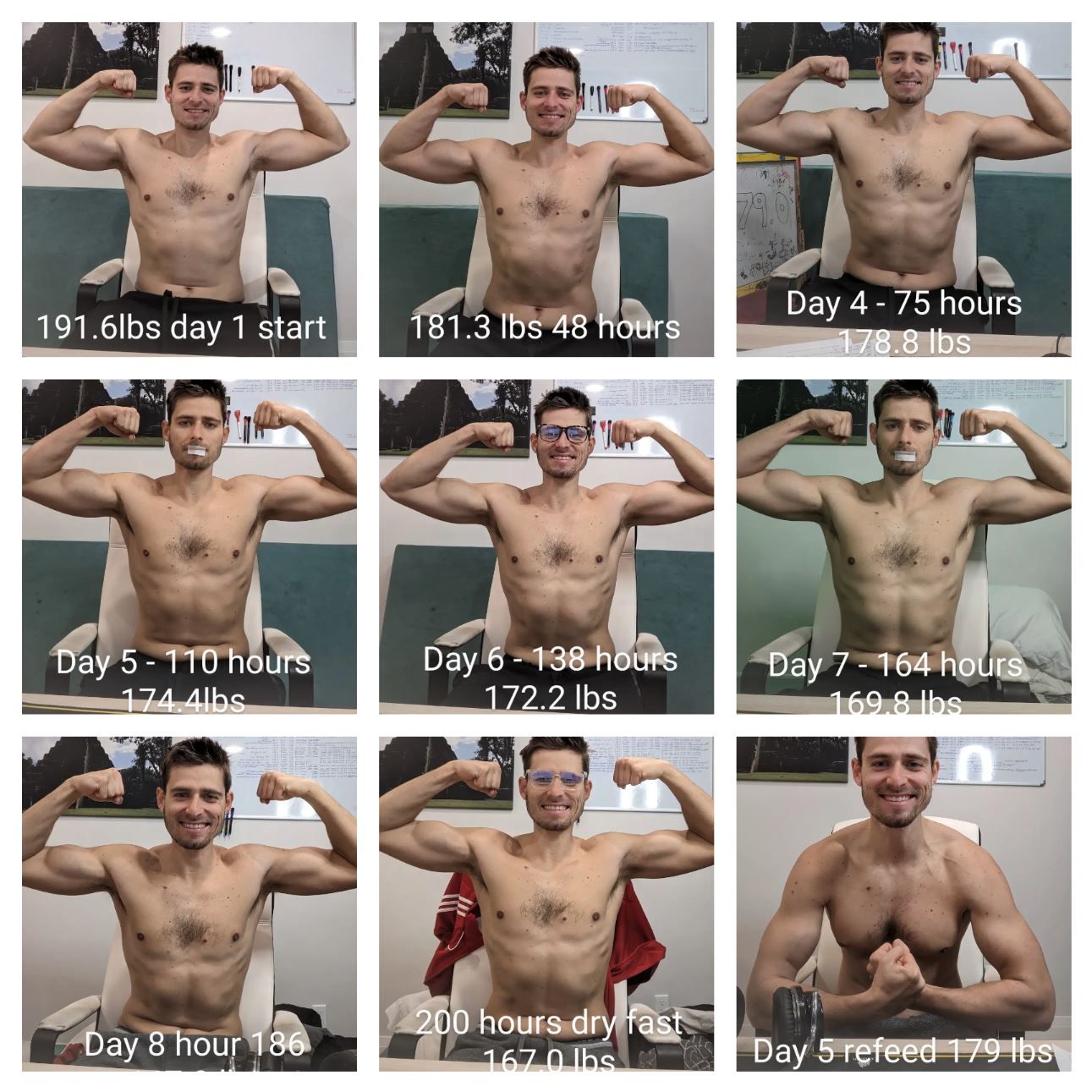
If you want to see what an extended fast can do in terms of weight loss check out this version of my 7-day dry fast results. Yes, my longest dry fast has been 11 days, and I've also recorded a 9-day dry fast live stream. Check the youtube channel. Doing dry fasts longer than 5 days requires a good amount of preparation, and you'd do well with a mentor in your corner for the first ones. But if you want to solo it, there's enough information provided on the dry fasting club to be able to safely do your own 24-hour dry fast, 3-day dry fast, or even longer.
Bottom Line
It is easy to lose weight with dry fasting. The results speak for themselves. No food or water is tough. There is no other weight loss regimen that can burn fat and drop weight like a dry fast. What would I have done differently if I could go back in time? I would have prepared a little better before the fast, and made sure I ate strictly keto for a few days. I would have liked to have overhydrated the day before and made sure to top up my electrolytes just in case. I think I may have been able to avoid the full brunt of the headaches on day two. I would have meditated more, and gone on longer, slower walks. Overall, I look forward to my next dry fasts as I experiment with rolling dry fasts and hybrid dry fasts.
The full 3-day dry fast recap video



